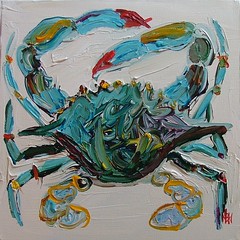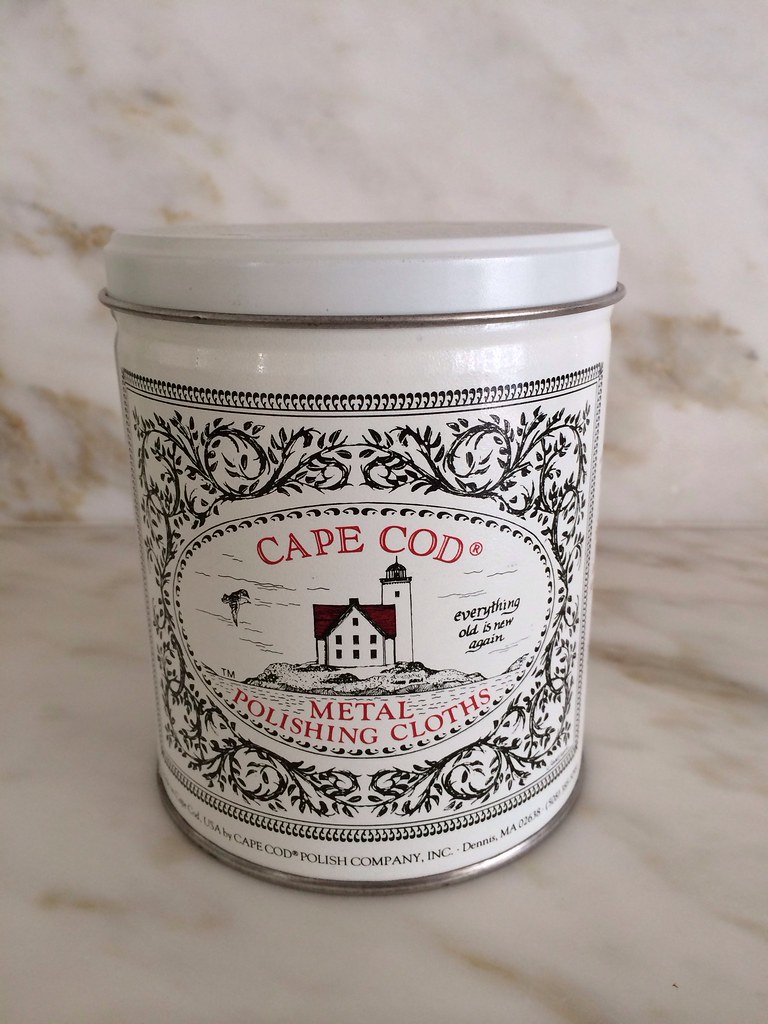The cover house of the August Atlanta Homes & Lifestyles is one that I have had my eye on for years. When it was being built, I would drive by to check on its progress (the house was built on spec; the developer was John Mears, architect Stan Dixon, and builder Benecki Fine Homes), and when the real estate listing went up, I was thrilled to finally get a glimpse of the inside. It was only a glimpse, though; the listing contained only a few dark pictures, and the house was not finished or furnished. The house wasn’t on the market very long, so clearly the poor real estate photos had no impact on the sales value of the house – anyone who saw the inside could immediately sense the quality of the design and its excellent bones.
I saved all of the real estate photos, and they provide an interesting dialogue on the story of the house, from spec development to magazine cover. Before the house sold, I was also able to get a tour by architect Stan Dixon, while the house was at the tail end of construction; the house certainly made quite an impression on me.
An artist’s rendering of the house, which was included in the real estate listing and was on the sign outside the property while the house was being built. The front door that was originally conceived for the house was solid, with a transom above. Photo above via real estate listing.
The door that the developer actually selected for the house had glass, so designer Betty Burgess used portiere curtains to create a sense of privacy from the busy street. What I love about this house is not only the beautiful clean lines (it has been described as ‘French City’, as opposed to ‘French Country’), but also the fact that it presents a relatively modest presence on the street, despite the fact that it is not a small house on the inside. Image via AH&L, photo credit Erica George Dines.
The inside courtyard of the house had a grassy center and pea gravel paths. Above photo via real estate listing.
The new owner of the house built a pool and paved the sides with bluestone. The doors on the right open to the garage, which can used as auxiliary entertainment space and is decked out with a disco ball and black and white checkerboard floors. Image above via AH&L, photo credit Erica George Dines.
The bones of the kitchen, and its layout, are one of many highlights of the interiors. Note the hanging pendant lights from the beam, a clever way to add task lighting to the space. Above photo via real estate listing.
The kitchen with interior design by Betty Burgess. I am not sure if the difference in color is because of the dark quality of the real estate picture, or if it was changed. The AH&L picture certainly shows the beautiful color scheme of the kitchen as it translates in real life. Two obvious changes: the island was painted a dark color, and Burgess added the industrial lights above the island. Image above via AH&L, photo credit Erica George Dines.
The real estate photos really did nothing for capturing the beautiful bones of the house. Even empty, the library was a gorgeous space. The window on the right is balanced by the bar on the left. Above photo via real estate listing.
The exquisite library, as seen in Atlanta Homes & Lifestyles. Burgess acknowledged that this was the darkest room in the house, so she selected royal blue velvet that would ‘pop’ against the warm tone of the paneling. Image above via AH&L, photo credit Erica George Dines.
To me, one of the most interesting rooms in the house is the living room. I was wondering how a designer would tackle the space, which is quite wide, with doors in each corner. Above photo via real estate listing.
Burgess handled it beautifully by setting up one side of the room in a more formal way (as seen in the vertical picture, with the fireplace as the focal point), and the other side of the room in a more casual way (seen on the left of the horizontal picture), with a TV as the focal point (the TV can be hidden by a set of sliding antique doors). Image above via AH&L, photo credit Erica George Dines.
The formal powder room really caught my eye when I first saw this house (Stan gave me a tour when construction was almost finished). Because this bathroom is not used for any of the activities that require a mirror above the sink, Stan placed the sink below a window, and the window has a great view. Stan said that a mirror could easily be placed on the adjacent wall. Above photo via real estate listing.
The powder room after Betty Burgess layered on the decorative elements. As Stan envisioned, there is a mirror on the side. I love how Betty had the window trim and sink base painted a glossy black, and I particularly love that dramatic wallpaper with matching fabric on the bench. Image above via AH&L, photo credit Erica George Dines.
This house has captured the imagination of so many in Atlanta; despite the fact that the house is only a few years old, many cite it as one of their favorite houses in Atlanta. Clearly the house has also captured the imagination of the blogosphere given how many blogs I have seen it on. Do you have a favorite room in the house?
To visit my store, Quatrefoil Design, click here.
To subscribe to my blog by email, click here.
To follow my blog on Facebook, click here.

![517ZKJCW7KL._SL210_[1] 517ZKJCW7KL._SL210_[1]](https://blogger.googleusercontent.com/img/b/R29vZ2xl/AVvXsEhPpSOpW_tNbi8Jdut64CN6cbgPjNhlVubzVKjR-25CZy396qaPDASiQdbRlN8k0DTtKahejeEmwzdcL_fieb87_354dkTWZyzkkkkIg7kp3G50s29IcNAb-UP13CDsSpp4BX4fCl7Bo08/?imgmax=800)
![41LdewZI6zL[1] 41LdewZI6zL[1]](https://blogger.googleusercontent.com/img/b/R29vZ2xl/AVvXsEjInfKazmNXZ1qK0xyxgm5-4sPXwYDD2jFPpkpI5MDjtG6-MqrxHhka1UQ43lTgJq8RMCCnkwAw5pmQpVGClhDOA-IGOJEOssc7syN0H10DIEYh8mbApQmRnrgcr1sQ0HlJ3hBRnQlV5gM/?imgmax=800)
![418HeFVnXzL[1] 418HeFVnXzL[1]](https://blogger.googleusercontent.com/img/b/R29vZ2xl/AVvXsEi6DNS8QDTWTRkNmUQFuqGw9SgDw2bkfClIP7mv_QtjwtipAw7_NyCPQLud0tgolxLkjvYqFw5eZE2o5cjXRFXForlB1S7w3b2m5GlUOAHCQSWmHMBEwprklmJDcYXOskb2jlbNgz_GX_w/?imgmax=800)

![Side%20Entrance[1] Side%20Entrance[1]](https://blogger.googleusercontent.com/img/b/R29vZ2xl/AVvXsEh1e3nE7rIAsVu_LLEr37gPDSnomy03OssRHaNm04i0_L1fVVSNjFE5V16qJr0x1L097LNwdxVVkaSf6A4tU0dOQ3gjoNHiu7bsKmVhu2_5FphzP3oRDzaFBBIEBX3f18mIJN-HZnhWgQY/?imgmax=800)
![4754783586_b4bf1b172d_b[1] 4754783586_b4bf1b172d_b[1]](https://blogger.googleusercontent.com/img/b/R29vZ2xl/AVvXsEhV0ZrcaiiU86RwGAGMYXZtHQoKyzl0R2aaQ46Ehyp39CWZKaPWTGymyVDpDjxdGpxhbqgmxiT8-1xnUvyBtudLn4dK3lm1ZcVq-HDGpEEjrv9kA6pMDp0TOEbqkKyZubMUrCIHSwU6ePg/?imgmax=800)
![4915941006_6d5643d087_b[1] 4915941006_6d5643d087_b[1]](https://blogger.googleusercontent.com/img/b/R29vZ2xl/AVvXsEg7btchMqQA_VzDU-dxFq4uRxRNbJUi_Aa4lUsZ4iDlVTz4sp0Wra3TzghDFx_ULp4KnbP2FGwlMeBMrg797qSbSsT6qxssJzFYzHGGCkMh2nb5AChFSYgbD_Gmt8kTF4s0m2ub-pGttp0/?imgmax=800)
![4917178884_0df41d4f2a_b[1] 4917178884_0df41d4f2a_b[1]](https://blogger.googleusercontent.com/img/b/R29vZ2xl/AVvXsEiOYRzUusODsgcR6HFnVuzj059jFyipTOnBCHuoAoBHWS0krNKiQwv0OSVUnuVqrr60lu6Rch4MZyEsysPy7V6Z12JHy5h0QIHlc9VUS6WRmAtikidIjtE1XMGv_62Fgzh3lNFXGTUiPJQ/?imgmax=800)
![4916550057_bbf4f98202_o[1] 4916550057_bbf4f98202_o[1]](https://blogger.googleusercontent.com/img/b/R29vZ2xl/AVvXsEhLvodDvSqdJZq5chCZdsRuG0iZU1i-3dn1mSnOHoehq19d4x1ugLZ4PfQzh4lhsGgnAZ25qN2F-fvTBr0DJbZeEcfnoj7TRceHpZ-yTDYd3cP4yDB9biI9hOSGk8shamXqoeID0k0eyOE/?imgmax=800)
![3694375438_553121677b_b[1] 3694375438_553121677b_b[1]](https://blogger.googleusercontent.com/img/b/R29vZ2xl/AVvXsEj8UIDSAoU8Jzp27bowoDAAghIvJjCf-80HNxxV2l9bUGXM2UUBinlJEw0mLauyghIMd6bzMnbTeny00IIYf3zbbvCvCnVHHQT9_mYBbO6GCKCjrmvzuKhgF1D_NS2oTVPn_m0AxDtN1Lo/?imgmax=800)
![DSCF0102[1] DSCF0102[1]](https://blogger.googleusercontent.com/img/b/R29vZ2xl/AVvXsEhqgz23jDIirkeEaBvEjGkheCfZ9lkbSWtgY_FOmeU6ikTUHBYISxsqp3hTj4jpKgBzYhqbpuU4xMQpKp_6AUq1IGigCNaTwTnpEa4k5-p1T6fT3p4nRVgUdFpFjVCyENzTt_rHFYL7Lio/?imgmax=800)
![DSCF0694[1] DSCF0694[1]](https://blogger.googleusercontent.com/img/b/R29vZ2xl/AVvXsEipcfG5Wga8bbDEdB4lzTLXGHBRG9pkAYYCit6WsRi1DSwO9-ROnMyWS1JmsZ_VIWT-HKt2t_MQ9NtZHSYoBfmsirtnyvtTY-zCditrOZbw3G7iix8x4zvKKg0ZPiZTWV52jqXDDRGY7JQ/?imgmax=800)
![3625358823_a5fa55d9ae_b[1] 3625358823_a5fa55d9ae_b[1]](https://blogger.googleusercontent.com/img/b/R29vZ2xl/AVvXsEiZ2dQ1MkoT7WsqtvbP-3OwDH65U11Bz2QH9mh-ncC3lt9QqW4BnqlklxhaiGNcE6Y6zE_2a0N_fL1yWRhaI0DWcaBMtMcn1vx5SkBSkqhwkl1KkZ_vtPmaKKylsZoMNfqwDTXYKgOLZnk/?imgmax=800)
![4399081489_ed61d29eea_o1_thumb2[1] 4399081489_ed61d29eea_o1_thumb2[1]](https://blogger.googleusercontent.com/img/b/R29vZ2xl/AVvXsEjwdTgC3dcw454svYkpyEF__MzD5Ly5fRflE8HdJizaegRD6lPqIeGGmHc_ozr8LmIGslMJHQF3XBDtuhyow3IQRHUNJWbVsf58WccGw-kqe4YicmUOZxAPh6xsoSZoPeKnm3Z1Z1nqT7s/?imgmax=800)
![2319214880_62fa4df2af_o[1] 2319214880_62fa4df2af_o[1]](https://blogger.googleusercontent.com/img/b/R29vZ2xl/AVvXsEghmEMHUSPJ1F9PYr9_3qN6Tz7Wf0nmCFFD1kE8zNxgrHgPFFnwP0Nb6PlTeIdyF2KO8fPlGMWl9g0bTd6cb8vCdOVVoGig3aOl4ktWjRscpQbQYOKECHOXb7LyltLQmqu35tXJCp2lrOI/?imgmax=800)
![4917333036_7641b2d1d0_o[1] 4917333036_7641b2d1d0_o[1]](https://blogger.googleusercontent.com/img/b/R29vZ2xl/AVvXsEhoHo37bNuoTUXVrpI2hI99fCVb-WAaBArLaLbLNB4KUonR2KCmjMw4xBDAJqYTNoygKneAWmTfcIT-kd7JkL7vAUSy5xej2mbsI1nU2humh3QkQH9eZB_uwM1oH0QDcAFHG0ghbRR4Uq8/?imgmax=800)
![4916733085_228354340f_o[1] 4916733085_228354340f_o[1]](https://blogger.googleusercontent.com/img/b/R29vZ2xl/AVvXsEgG6L66Gu6_aDO6DVxiG5icx1t9F9PMNpVRqImVl7yzDIqEQgU1GvmJONcuTF3jm3Lg1wAnJ8Ys4yoiJ6wXjKiUon92XENnUMqz1R8jlD8suFyil5CJU1SY50BuH5vw6JNsDM20jZ4GB00/?imgmax=800)
![4919493081_b62c85549f_o[1] 4919493081_b62c85549f_o[1]](https://blogger.googleusercontent.com/img/b/R29vZ2xl/AVvXsEjbKrAmf5fHLDRvjVphk6ijBlOJ2uXYLq4KvmRZR-N8kmfqSMMwzD9KaAXrPURI5fdd8UP0bMBjIfO4Tnq843KFN0REPlVepjjgxYfi_eXboBASFE2O1ZqCk6NYOu6hGt2-N_ntHjKrT54/?imgmax=800)
![4361382452_dcc057d46d_b%5B1%5D%5B2%5D[1] 4361382452_dcc057d46d_b%5B1%5D%5B2%5D[1]](https://blogger.googleusercontent.com/img/b/R29vZ2xl/AVvXsEjkeG4F8c6vyFCLrPwgYXmFOUvwrelQ3MbhpGrExp1y7WAI2zfe9Us2G7ihpYzLD9cZ2nK5cuT6NI6rpWimiq9pJ8dwdT4FGhR6SOK1XMRKvPCWoDtZCQentNORnp16hwBIHKuSg8Nl3k4/?imgmax=800)
![3693568023_7e583f1ede_b[1] 3693568023_7e583f1ede_b[1]](https://blogger.googleusercontent.com/img/b/R29vZ2xl/AVvXsEg-XcCb-WNqHCOPirLaIO7CkBqvOISCKKAJleVEjYi6wrTo1TfENVex8tYC6wI8LUBFQcg5ti90ERx24D7Zkt3V-5M0E55bwox9K55Se5Tzg_j9BjgFiyfJDk8e1nc-V8breW4e3xdtZWM/?imgmax=800)
![39925_421788904098_65106894098_4564223_6312619_n[1] 39925_421788904098_65106894098_4564223_6312619_n[1]](https://blogger.googleusercontent.com/img/b/R29vZ2xl/AVvXsEjCwS2snewj-gd02vg4UmHpRoD06hQFdiqBN3Bm4ay7ekGzI3jCRy-gwMciA7_8vASMT1QA03dXUItK48gvphiSSB9wSPhUMtNRToyCpaRIYKbpX9W0muZQBEmgZgzjuoVxVus4DXyGyBM/?imgmax=800)
![3182424033_d145381636_o[1] 3182424033_d145381636_o[1]](https://blogger.googleusercontent.com/img/b/R29vZ2xl/AVvXsEgagTPuKEp5BIZpble0ekuh5sNTYs2xiP89grmGXojucg3OAB-Iyp-WeFYfXkbVbqH-nu_-pGPI3xRnbwaMy6rr_I923KB50jkmf4k3cAnMzn-KNlrdFL8u4tNOcX0QNRNu7zLVshXbFNY/?imgmax=800)
![4917733291_ed83471e36_o[1] 4917733291_ed83471e36_o[1]](https://blogger.googleusercontent.com/img/b/R29vZ2xl/AVvXsEg_XYNRLUXS1x9zQUIQZysptbPm2cde_SmI-6rISaSz9UoU2p36YqdNzYEIzCtpkIjBrQtbVEK1sVcNA1X0GEHk_cJCWPZJLDlMHz4Yi_u3f7SBI7F-6wW4HltVWHZ0LMwr5SjYBlZ9QlI/?imgmax=800)
![Mediterranean Masterpiece - Before Entry[1] Mediterranean Masterpiece - Before Entry[1]](https://blogger.googleusercontent.com/img/b/R29vZ2xl/AVvXsEg2nvAxjXiFzwkR-oFPggUoJVaP_D86EgV4k7QTzAKjWHDdpTl_34jAxYGwSy6rzPhLSZz21TAYUzTmFxD02-RI-Gd2oXxJQY8UK85p3tQsY4pw4ZI0HTKLNAFGy-uHlqS8YxIlxy2kXTM/?imgmax=800)
![Mediterranean Masterpiece - Front Yard[1] Mediterranean Masterpiece - Front Yard[1]](https://blogger.googleusercontent.com/img/b/R29vZ2xl/AVvXsEgRloXLASJpHyOU9nWK6fpstLBks4TbWQN61b1DghSnC0wWG45wnLumfFN0orIHk165nDpML_4X-hXLpabXPdhq2ds_iyFuXOTCN1A9uKBrWLlxjdjLUEP9CnH4O5Sdov4Oc2lwW0y8Pq4/?imgmax=800)






![4893618112_eee77aff0b_o[1] 4893618112_eee77aff0b_o[1]](https://blogger.googleusercontent.com/img/b/R29vZ2xl/AVvXsEhFSSVGRUOILNmFhOe-0J9B9MRLHHuQyhxF8Oe53bFIru_lmbj0HIelSR4rWsPEImLDJ-wefwo-UNtZ4jH4EmBjL09gYbZOm6dTGvhYtgWg8nJkT12bJVHB3IBMb_MsCEMszLqlcLHVo2A/?imgmax=800)
![4893034761_7d27c5eeec_b[1] 4893034761_7d27c5eeec_b[1]](https://blogger.googleusercontent.com/img/b/R29vZ2xl/AVvXsEgVpINBhyphenhyphenj3rMHouDDnu-AfBeIuaGenJWHXQVCqXvI1LM5e83CBu7X2dfBQtevriINTJNlb0CVUwfEoTZvq83dAhV0DrjD2zjpAmSq-JWhyphenhyphenbzASzuNdpY3ytw7BztrPrAi88Zj_u_DHbIk/?imgmax=800)
![DSCF0013-8[1] DSCF0013-8[1]](https://blogger.googleusercontent.com/img/b/R29vZ2xl/AVvXsEiZsWmtj4G0M2Er9Lres4iqtk4RadFV4ywXSl1U1NSkFxZ3qMVBj8UnIHuDBKqEubG-LZCrIcm02SwL9uGDIUTCs0bxY5OTCPsp5E4V4B41W0d-DRCRIw7GJSo1WlMQQ-GN7KhgOb2OBIA/?imgmax=800)
![perfect%20pitch%20atl8.bmp[1] perfect%20pitch%20atl8.bmp[1]](https://blogger.googleusercontent.com/img/b/R29vZ2xl/AVvXsEjwRQZxx4BQlTKVtwiO8MKyNmEJdRAwYsrOWgHNpxnX3ZzeVDnWB9fMbnlwOk7FlcH3frqLLBCAdWOm2eiDQRlG13oEe_09qnqS_0ksGa8yb8obWZVP_34j_UHdPyWFrADFw0iE95VDCzo/?imgmax=800)
![3769109_2[1] 3769109_2[1]](https://blogger.googleusercontent.com/img/b/R29vZ2xl/AVvXsEgvRgJ_18lZeDKXCafd8fMTwQwCIyAfa_8IGbS24XZlKrauO0Tr9XGF1kEfe0wmxiNZN1y02bHBKMf8YVql05WnHtCzPGKpeOYYC4Ky8HBPKF1YTTtjeEmasi5_1J4XGtPcXTnHl1Ew074/?imgmax=800)
![Perfect%20pitch%20atl4.bmp[1] Perfect%20pitch%20atl4.bmp[1]](https://blogger.googleusercontent.com/img/b/R29vZ2xl/AVvXsEhBeplJ04GIpC9OVeFjX-7xbIIsvGJRgwz2h7cBUTtrm09sAgFKm5pZPCjHxz5UxyV5lN7i5sV3hRM2HmAn960WU28O2V_-3Z-Bf4jqp5e2rU9i43YG2njM-nx5s1aDE7wxDglDl9L3eqw/?imgmax=800)
![3769109_3[1] 3769109_3[1]](https://blogger.googleusercontent.com/img/b/R29vZ2xl/AVvXsEhMFodvEEpJqgAUB9yLEb48A0v23EuHJBBakxrHMFrnNJZoG5VqDi4ytb0KI-7O93Axpc1y4GlRXN45bl0ffO5oXAfjepPBeUecqOf5R6jemeFEgHZGi8_bwD9IM4uQd8iTZsI3hLONAeU/?imgmax=800)
![100325_EGDINES_Lowe_Burges_08[1] 100325_EGDINES_Lowe_Burges_08[1]](https://blogger.googleusercontent.com/img/b/R29vZ2xl/AVvXsEinw1QliK3u1534jcjlYmhyuX5S5RsPZ8CBBMWERcz8Z3b1nLwa1FtqdYUV0Y0OGIpOZP3GcHwqoYyfbh5LJh1fLrNPuzMxwR7oIuqM8SHIeVh0CIKHqmlTzS2prvZkyslUDoAmlK3Lwus/?imgmax=800)
![4893607786_5fab584284_o[1] 4893607786_5fab584284_o[1]](https://blogger.googleusercontent.com/img/b/R29vZ2xl/AVvXsEjp_ZTvlbN_h1kj3AQMP1mcjK-Oxtb5g6Clg4agyLYoZ9z2Rl439fjqWQ7h4G68ty8gsQVDPvJVvoonnsqt4fackUCmQSuz8EBf1CpFJe3kk36xBm32GWvZvHNON2t14zcOmTI7zSw4M2g/?imgmax=800)
![100325_EGDINES_Lowe_Burges_04[1] 100325_EGDINES_Lowe_Burges_04[1]](https://blogger.googleusercontent.com/img/b/R29vZ2xl/AVvXsEjsg18WiqfYi3URlHTRF6VqB0DWDM6a8wbfBZOziKZrW5mJlGk6BprfLcw9yfnBCZHuU4otnZu6KUXtCoxp3dG5Vs2i142mrclEFQysdbsnEa-oTiXSnpqEi4gXIkUhr2Vjb9HFt-OP-AM/?imgmax=800)
![100325_EGDINES_Lowe_Burges_01[3] 100325_EGDINES_Lowe_Burges_01[3]](https://blogger.googleusercontent.com/img/b/R29vZ2xl/AVvXsEhdU8HUJWNTQkQRSHvGJ7xTGltkTf8fG3hg734xIgOueicWuPxMreeBJ3yPS1WDIB17VXRDI0Cp2rkGp3UJGF-gAgY6VIwbzNs7suftu0hJ55vTKOda_6Ahh9wj-jyxvMiL_xK925q_sBA/?imgmax=800)
![3626311138_540ff2e01c_o%5B1%5D_thumb[1] 3626311138_540ff2e01c_o%5B1%5D_thumb[1]](https://blogger.googleusercontent.com/img/b/R29vZ2xl/AVvXsEjz0ET23SORH5rTf6fkUPqLthHj5hOtBLE5H39HPgcwi0rRXZmpLp1NEHgIwYAiGAnhbc24Zy6j_QL9gs2QZfFxjbcHXNIvE-KTz1tPZ7DIckWjU12rD81-MXa4v4XF6MMAMLADC2K-ejM/?imgmax=800)
![4877206479_d2eb76ba91_b[1] 4877206479_d2eb76ba91_b[1]](https://blogger.googleusercontent.com/img/b/R29vZ2xl/AVvXsEg7rfED3KD_x0bAKNp0kdR-1FL-E7LX48BmxrBtpzBTfuyjS3TrhNMopXL38tUf5ypLZkBCr62E4DHIOuBwS0vV3r3Y_-Ew1NEaAbpUNcSQovtT8JjbgGffztA4RtMZ6dlsKm7BWfV0WqQ/?imgmax=800)
![4710860690_8787ec9e35_o%5B1%5D_thumb%5B2%5D[1] 4710860690_8787ec9e35_o%5B1%5D_thumb%5B2%5D[1]](https://blogger.googleusercontent.com/img/b/R29vZ2xl/AVvXsEh0aE9D0UmjM6STGiNk8pY8hBxtqWG9EYQ5gXa7MGZt2CoPmE_n17dOBjX1-6jTUdJdHakT3kcFbJ9RWTb4rJ-QDQPTBsb2RLWoI2TmLi7LDQ7jUL2HCV8gvligjuKc7MpXnprkspg8KiA/?imgmax=800)
![4784771023_ebf20c31f3_b[1] 4784771023_ebf20c31f3_b[1]](https://blogger.googleusercontent.com/img/b/R29vZ2xl/AVvXsEh0BDAOsMzmqaK1e5VKMRh6z65o2cq6BiQ-nOcvNSUBUIDbG3Twu2RmdtqohiwMCJSq2R_-tdq513RB1zE-HnETDP60KCxIU6c88CVuD7iNLxFdIgx2Wt6GYt-7JR3-vL-99UUYVvJYWeI/?imgmax=800)
![4784802159_073219d7fc_b[1] 4784802159_073219d7fc_b[1]](https://blogger.googleusercontent.com/img/b/R29vZ2xl/AVvXsEin9czDDDCc-3CnLZXRbjIqXYa4SJmXqpPCX0UxZ0YF235pLm-r06nihfnk7PuLDEp38X2CZ9AS2CVI6uvsIxeX-KJawd65Csnvjy_Lh6XhFNxEWNF13E7uTtOD6m1t796DqXeSVPCn4Rs/?imgmax=800)
![4785456852_479370f576_b[1] 4785456852_479370f576_b[1]](https://blogger.googleusercontent.com/img/b/R29vZ2xl/AVvXsEhWhKk6Cckkj3kmgR8H3K1Z-G-XMVQkDEfFe7On4wJ-wLH__tu9hzkG5-VxGduH-r4C7zm-45WCwnZ4H6u_gjCj8Cad-zE-I3LcFaWIEErlJEc4i6D6HBHepgYQLAREZ3EUJ7wZc-GLRls/?imgmax=800)
![4785475970_bc30af5552_b[2] 4785475970_bc30af5552_b[2]](https://blogger.googleusercontent.com/img/b/R29vZ2xl/AVvXsEi0PDeJ5NR8F717yVWYYYuDrV_h26lX66Aqqd2RCdah709xZFQS7CRSDR9daYd-ZC0ON5YzZ7JzWqWYvByWbCNud1zbGkyWibpDKY8mApRRKHbEEFjh5PgWlvDNWSmLk-WWiv2kDWmAg5c/?imgmax=800)
![4710193137_84edb56a02_o[1] 4710193137_84edb56a02_o[1]](https://blogger.googleusercontent.com/img/b/R29vZ2xl/AVvXsEhwrYTOTTWIfL1W2CMUJEkYUYmRwXwIb3FkDiDo_4KNdf5r3eu9RUoyJqL8xTyD-uLO08MdmE-ysscj0eJ3ieAWYujvF4b5m3oyugLmOKAfoVNrE6xtA8GEu9-9apFebESBs-Tru8nVWqY/?imgmax=800)
![4710855312_a63fe7f416_b[1] 4710855312_a63fe7f416_b[1]](https://blogger.googleusercontent.com/img/b/R29vZ2xl/AVvXsEj9jnizxanRwnJlh0zNEbdMYCBLJcJlp0og2qjmbudvbTcoKeYmzVMmCLo-4XZxxnz3XwPk6WHD8q4CbS88q87AYvJp7blLfSpI-dbQBaXePFPTucR87wHSS_ZhyfFNz5PvrKk9amXnPQU/?imgmax=800)

![4788438366_f1b0f567ff_b[2] 4788438366_f1b0f567ff_b[2]](https://blogger.googleusercontent.com/img/b/R29vZ2xl/AVvXsEj1DwWWSHUmxb2ep5bZlWBOr8pXTtNupjnSEdy9nZq4S5hWXqU_8gARkwdppo0_e3rqPOKnqW_URjYIP5ICa6LCgAGhoIp8MOC0_C4m8uyE_9gfMuzGCfKVMf3SShhnj9MMI2CDLtVDCvA/?imgmax=800)
![4787849131_1fc82fe0d1_b[2] 4787849131_1fc82fe0d1_b[2]](https://blogger.googleusercontent.com/img/b/R29vZ2xl/AVvXsEhejal-k0g1Xha9dYusMLkV3RDScGHZi5SKkQLJrb7nu9jj2GXfyunnkCmTxgZ9X-7wrBNwLpnRdf9ffIcJ5B_d4r6-FkEGZiNh6ERXU_uBI2I0Tx3nByI104lF_6Ry3etsppNkO26VVwo/?imgmax=800)
![4787830629_38ff8f79de_b[1] 4787830629_38ff8f79de_b[1]](https://blogger.googleusercontent.com/img/b/R29vZ2xl/AVvXsEgt91-QszPlKkmPiROqF-YiJZ6lSR0yPIoZhCju_dMdxJDddi4dRZuRTLYyHJVYVQ7dA4r6BbPGtECPKWhmAKDpIaDALXX5Z4QQ0bCEUpMNF1UPS6GAOLY89t6UKe9KeTi2lsm0L7tXEVE/?imgmax=800)














































































